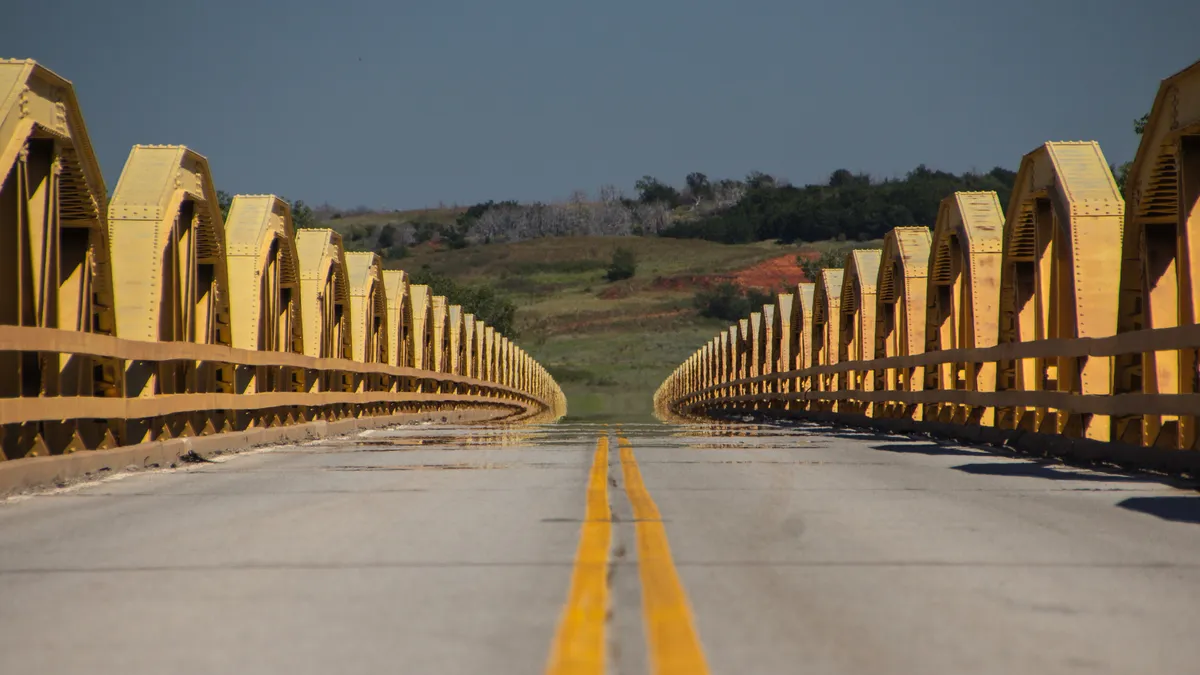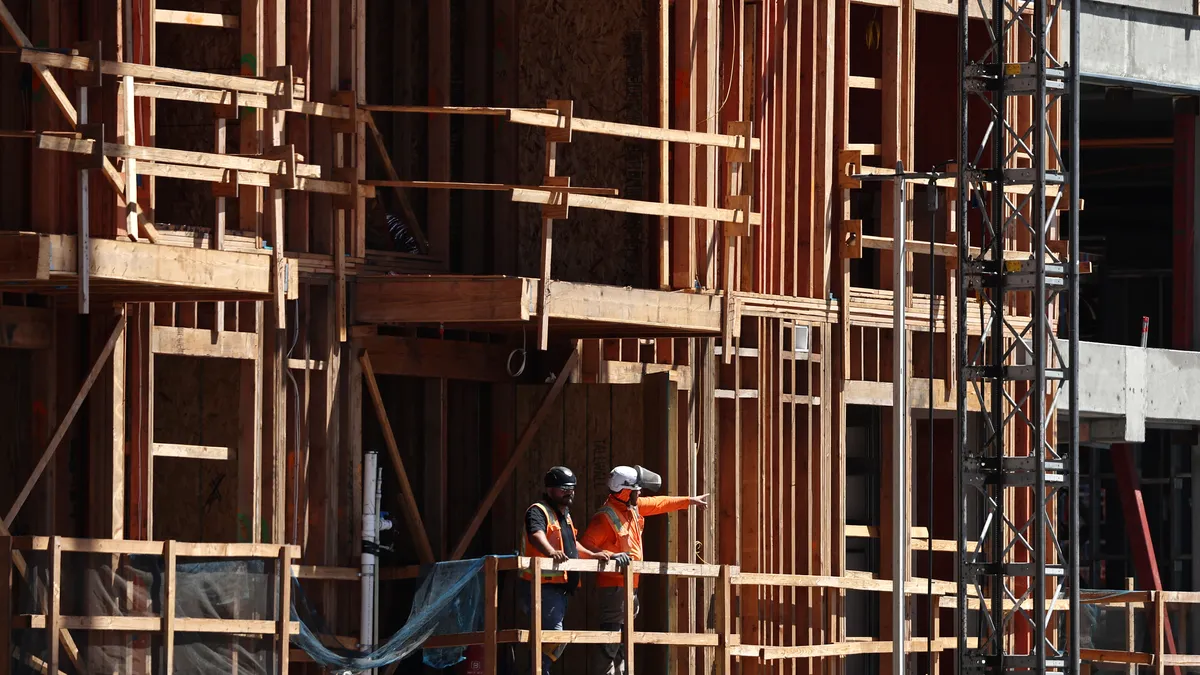Dive Brief:
-
The Oklahoma Department of Technology plans to use new technology from the U.S. Geological Survey to determine which bridges need inspections after a major seismic event, according to News 9.
-
Called ShakeCast, the tool looks at factors such as ground movement, earthquake magnitude and the age and condition of the bridges in real time to show which ones are at the greatest risk of damage.
-
The software has a two-year, two-part, $650,000 contract with Infrastructure Engineers, in Edmond, OK, to come up with an earthquake response protocol.
Dive Insight:
Oklahoma’s DOT isn’t the only agency to employ ShakeCast.
California has used the technology to review its Caltrans rail system’s more than 11,000 bridges and overpasses after a seismic event and to inform potential delays or rerouting. The Los Angeles Unified School District is also using the technology to improve its earthquake response system for its more than 700,000 students across more than 1,000 school and office buildings.
While the West Coast is at a higher risk of significant seismic activity than anywhere else in the country, other states are testing out new technology to inspect bridges for wear and other damage.
The Minnesota Department of Transportation is creating an infrastructure monitoring and early warning system for structural failure of its bridges. To do so, the agency has been studying vibration data from the St. Anthony Falls Bridge on Interstate 35 since 2008. That bridge was built to replace the I-35W Mississippi River bridge, which collapsed in August 2007, killing 13 and wounding 145.
Data collected at the new bridge include how its concrete structure responds to vibrations from traffic, wind and temperature changes. Similar data is being gathered at the 21-story Green Building at the Massachusetts Institute of Technology, where researchers are looking at how such vibrations and other environmental conditions impact the building structure. The goal is to find and strengthen potential weak spots before a seismic event.












